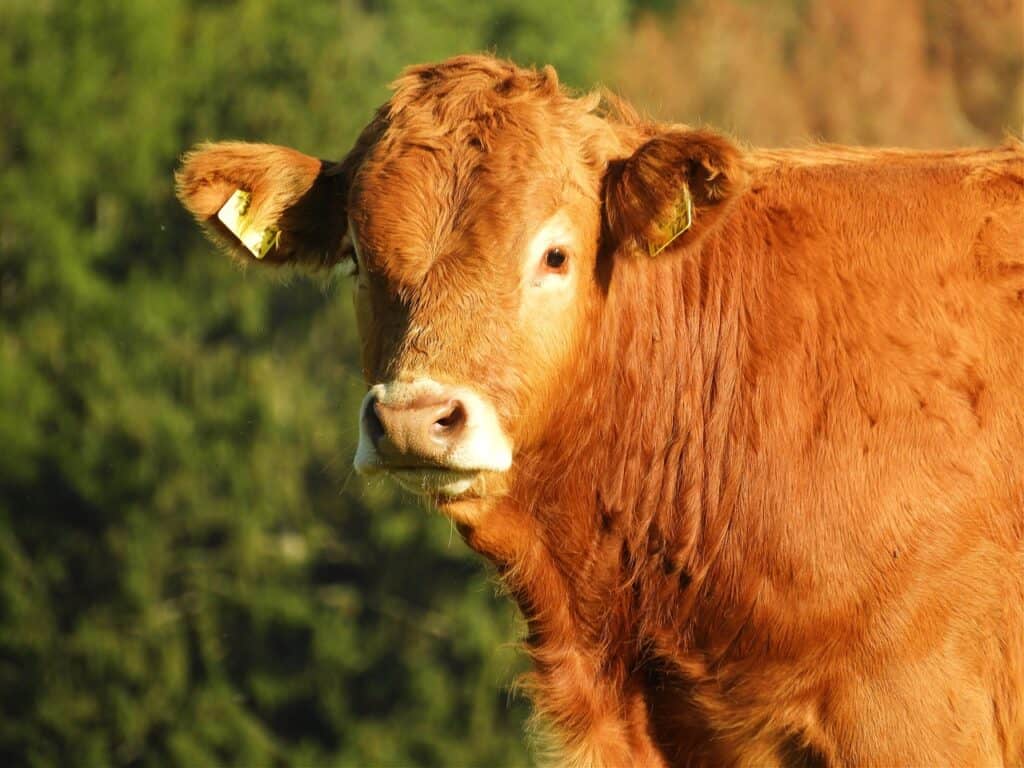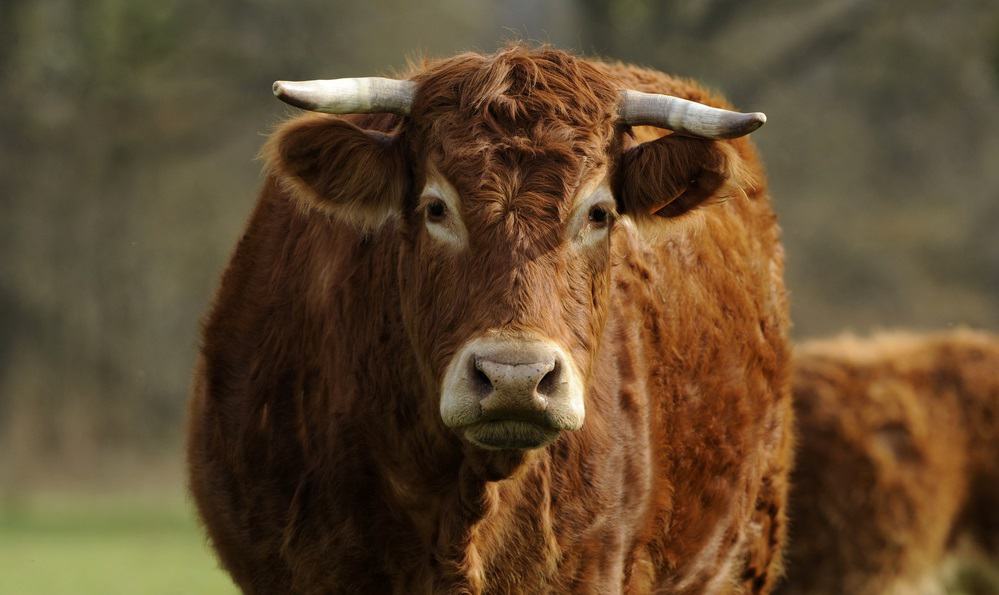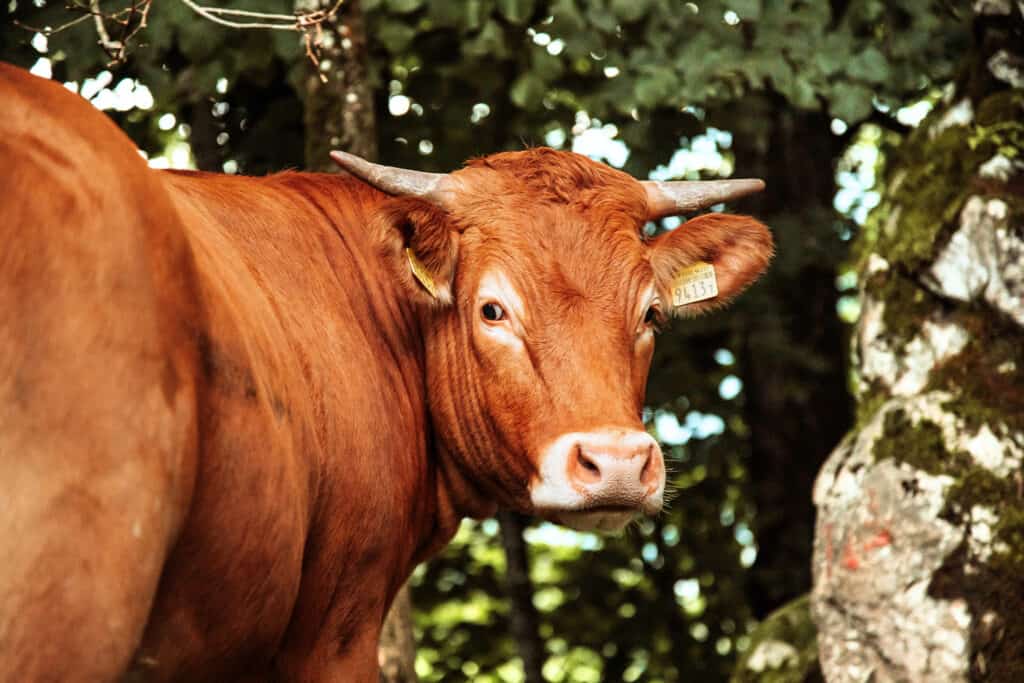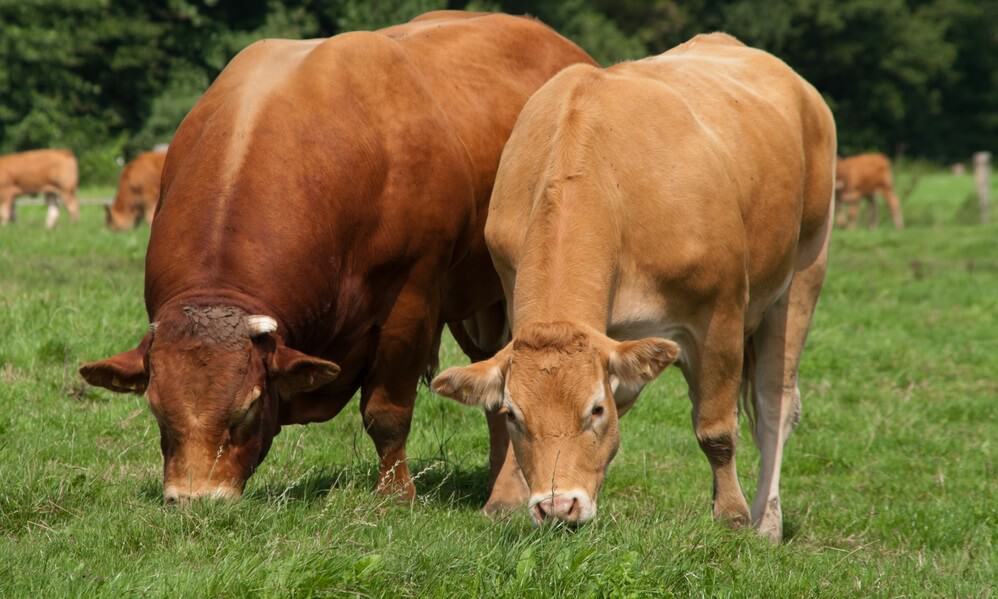Limousin cattle is an ideal breed to raise for meat. About 60% of beef cattle live in the USA. The beef cattle manufacturing industry is more popular than the dairy production sector, but production costs are rising, and mass production has detrimental effects on profit and the environment.
Beef producers and small farmers are now moving toward more sustainable breeds, like Limousin cattle. In this post, we take a closer look at why Limousin cattle are growing in popularity across the globe and reasons they might be a good fit for your small farm and homestead.
History
Limousin cattle might date back to the formation of the European continent itself, as told by the cave drawings of cattle found in the Lascaux Caves near Montignac, France dating back 20,000 years. These illustrations look very similar to the Limousin cattle of today.
French Limousin cattle existed in the Western Massif Central within France, a somewhat rainy area with a severe environment and deprived granite earth. Cultivating field crops here was challenging at best and putting stress on animal farming.
Due to their location, Limousin cows developed a rare toughness, well-being, and flexibility. The lack of natural reserves also allowed the area to stay comparatively inaccessible. Thanks to that, farmers bred their cattle with barely any external genetic meddling.
When animals were sources of manual labor, Limousin cattle attained a well-deserved status both as beasts of work and for their beef qualities. The cattle went from a working meat source to a highly specialized beef source. Because of that, many people in France refer to it as the “butcher’s animal”.

Limousin Characteristics
Limousin cattle are bulky and lean with a strong-boned build. Adult Limousin cattle females weigh around 650 kg and adult males around 1000 kg. Their heads are comparatively small and compact with a broad temple, and the neck is petite with a wide muzzle.
Their coat color is golden-red with dimmer shades in other areas, like under the stomach, the inner thighs, around the eyes and muzzle, and the end of the tail. The skin is devoid of any pigmentation.
Limousin cattle with black heredities display a color distinction. Calves are brown or light fawn and gradually change to a deep black as they mature to adult age. Adult black cattle often show black coats thoroughly streaked with brown hairs.
Their horns are yellow at the bottom and blackened near the tips. They are straight and then curl upwards and forwards.
Statistics
An early-growing species, Limousin cattle organically provide young but developed lean tender meat in the mid-weight range required by stores and suppliers. They have a reputation as the carcass species, providing beef with a smaller amount of bone and fat and a high marketable meat yield of 73.3%.
A study into beef manufacturing emphasized that with suckled three-quarter breed Limousin cattle calves, 98% of their carcasses have -U or higher ratings. The beef quality of the Limousin cattle carcass also stays high regardless of the age at the butchery.
Overall, these cattle assure admirable output at a lower price. The bulls are also very fertile, and their good genes pass on to all offspring, whatever the female’s breed. At the same time, their more petite frame guarantees an easy birth. The Limousin cattle is also a good consumer of any feed.
Commercial manufacturers affirm that Limousin cattle crossbreeds have a more significant weight gain for each kg of food eaten than any other cattle. So, beef manufacturers raising Limousin cattle can assume that Limousin bulls and other cows will do well on a smaller area of land while producing more progeny faster.
When manufacturing costs govern profit margins, such traits are of great benefit. Limousin cattle-Holstein Friesian cross breeds play a considerable role in commercial meat production. When crossed back with Limousin cattle bulls, their three-quarter offspring provide carcasses of comparable value and quality as that of pure cattle breeds.
Purebred Limousin cattle females are great suckler cows and offer a practical marketable option for manufacturers preferring closed herds. They exhibit good fertility, a strong milking capacity, high birth rates, and birthing ease. Crossbreeding also guarantees active calves with Limousin cattle quality, and you can trace home-bred substitutes from birth to butchery.

Purpose for Raising Limousin Cattle
Limousin beef
As beef costs remain stagnant, Limousin cattle cross breeds constantly top market sales throughout the globe. They shine in feed efficiency and eat less than other cattle of the same stature with equal or better quality. From suckler calves to breeding cows to weanling bulls, Limousin cattle offspring are in demand at each stage.
Limousin cattle and Angus crossbreeds make ideal beef with good production and marbling, providing tender and tasty meat. Another essential feature of the breed is its fortified immunity. As a result, the typical bovine disorders are rare in these cattle.
Limousin cattle are unparalleled for reliability in providing first-rate meat. They meet marketplace conditions and premium classifications with the correct fat percentage and high kill-out proportions. In addition, these cattle are extremely effective feed converters at each maturation stage, a significant benefit as a universal product as prices rise.
Limousin cattle are also one of the breeds used as feeder cattle.
Limousin milk
Limousin cattle is a multipurpose breed that provides economic rewards at all phases of the beef production line. So, many more dairy farmers are also opting to raise Limousin cows as their pick for beef and dairy. The dairy sector needs a practical, easy birthing sire to provide high-quality meat from the group.
Suckler herd
Limousin cattle are mid-sized cows with unique maternal instincts, calving capabilities, fertility, and milk production. These features come with higher meat quality and the ability to provide more efficient and high-quality meat animals from the herd.
The combo of easy calving, maintenance, performance, yield, and progeny results in a profitable bundle for suckler farms. In addition, many suckler farmers use off-farm employment and their creativity and choose this beef cattle breed for their herd.
Limousin cattle provide easy calving with active offspring, reducing farmer contribution before and after birth, lowering vet bills, and providing more live muscular calves for sale.
Resourcefulness to a suckler farmer equates to profit. Limousin cattle calves can sell as weanlings, with cows reserved as breeding substitutes, sold for breeding, or butchered on the farm.
Crossbreeding
Limousin cattle are an ancient species used in crossbreeding with other cattle breeds, such as Scottish Highland cattle, mainly because of their aptitude to provide hybrid stamina and advance the product and feed conversion effectiveness.
Limousin Cattle Facts
There are many advantages to raising this beef cattle breed:
Pros
- They acclimatize to most situations, particularly frigid climates with proper shelter, including a cattle shed.
- Excellent in feed efficiency
- Long lifespan
- They have high fertility in both males and females
- Good-natured temperament. Learn about safely raising animals with horns.
- Birthing ease
- High calf activity
- Desirable maternal traits
- They have a bulky, high-yielding carcass
- They have a high-profit margin
- Lean saleable meat

Raising a Limousin Cow
This is one of many beef breeds gaining more popularity in the meat and dairy industry. While others prefer to rely on standard cattle, farmers should not overlook the importance of this breed in terms of sustainability and profit.
These cattle are good rummagers and convert feed into mass more effectively than other breeds. Learn what does clover do to cattle and how protein tubs for cattle can supplement nutrition when the forage quality declines.
The carcass of the Limousin also provides good yields and is genetically “trimmed” to provide beef that is tender with fine fibers thanks to its low levels of fat. Ultimately, we need to research this breed to get all these benefits sustainably.
Learn more about caring for livestock. Other cattle prized for their meat and hardiness are Ongole cattle.

